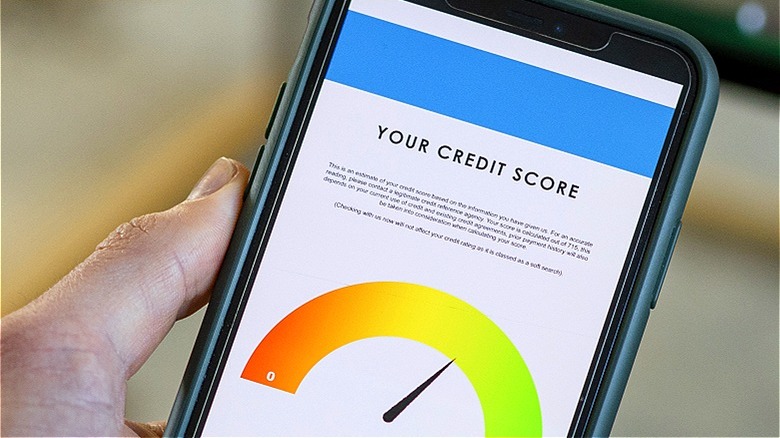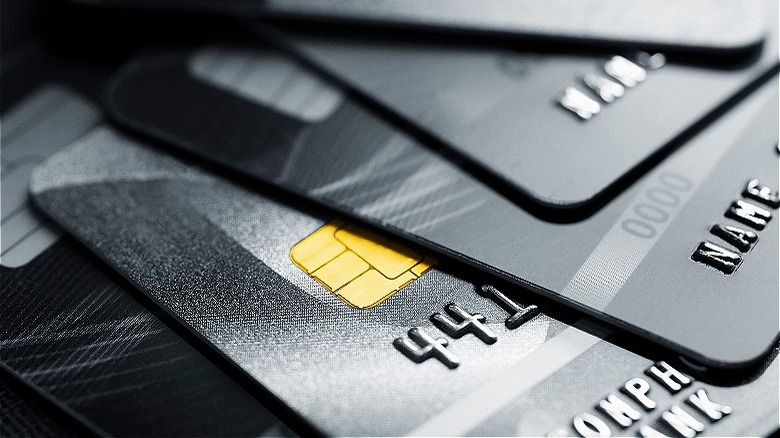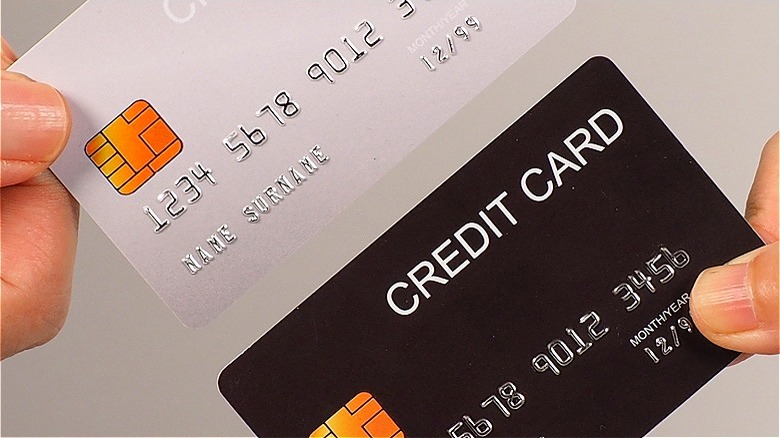5 Tips For Finding The Best Credit Card When You Have Bad Credit
So, you've had some difficulties managing your credit in the past, and you're now learning how bad credit can affect your life. The good news, though, is once you've settled all your debts, you can start rebuilding your credit. While there are good reasons to think twice before closing an existing credit card, the high-interest card that got you into trouble to begin with may not be the card you need now. However, emergency financing, fraud protection, travel insurance, reward points, tracking expenses, and raising your credit score are all benefits of owning a credit card, so you'll likely want one in the future. Yet the challenge, of course, is finding a good credit card when you have bad credit in your history.
Although bad credit isn't great, no credit rating is worse. According to the Consumer Financial Protection Bureau, 26 million Americans were considered credit invisible in 2010, meaning they either had no credit history or nothing recent enough to be considered. If you're in the lower income bracket, you're more likely to be credit invisible in the United States. Consider, while 30% of people in lower-income neighborhoods experience credit invisibility, the CFPB reports 4% of people in higher-income neighborhoods face the same.
What's more, Zillow found in its 2023 Consumer Housing Trends Report that Generation Z and millennials, who make up 23% and 35% of renters, respectively, chalked up their rejected rental applications to them having low or no credit ratings, demonstrating a score blindspot with major life impacts. If this includes you, know there are ways to find the best credit card for a bad-credit situation.
1. Seek good financial counsel
Americans held $1.129 trillion in credit card debt at the end of 2023. What we can take from that is that sometimes everyone needs help. If you need help with settling your credit card debt or assistance with credit card debt forgiveness, a credit counselor or agency can help you through the process, or even just show you the basics of how to create a budget that'll keep you out of debt in the future.
The process typically starts with an analysis of your financial health based on your current assets, liabilities, and debt, followed by a plan that's tailored specifically for you to pay off your debt. That will include making decisions together about whether strategies, such as credit card forgiveness, debt consolidation, or a debt management program, are in your best interest. With this said, you'll want to gain a full understanding of the risks and benefits of each strategy. For instance, speaking to a credit counselor has no impact on your credit score, but employing a strategy like debt consolidation that closes out your credit card could in the short term.
2. Know your current credit score
The first step to getting a new credit card when you have bad credit is to know your credit score and understand what it means. A credit score is important for getting a new card because it indicates your creditworthiness and ability to repay what you owe your creditors on time. The highest credit score you can have is a perfect 850, and people with debt can and do have excellent scores. However, they tend to exercise discipline and consistency in their payments, leaving them with less than half the median debt of the average American but more lines of credit. You've perhaps heard warnings about how often you should be checking your credit score without negatively affecting your score. The good news is the sort of credit check you will do through Equifax, TransUnion, or Experian — considered a "soft" pull — won't affect your score at all.
So if 850 is the best score, then what's considered a bad credit score? The average score in the United States in 2023 was 715, which should tell you what's an acceptable score for most creditors. However, the lowest score you can have is 300, which gives you a lot of leeway assuming your credit score is higher. In a CNBC Select interview, Jim Droske, president of Illinois Credit Services, said the target score you want to reach is around 760 to 780. Droske described it as "the pinnacle of what lenders care about," with anything higher just being icing on the cake.
3. Research the associated credit card fees
So, now that you've improved your financial literacy and know your current credit score (and are working to improve it), it's time to think about applying for a new card. When you do, keep in mind what you'll be paying the credit card company in fees. As a person with bad credit, note that you'll likely be subject to higher interest rates, as lenders typically reward borrowers with higher scores, while charging borrowers with lower scores more (due to higher risk). The national average for credit card APR rates is above 20%, per Bankrate.
Certain fees, meanwhile, like late and annual fees, you can avoid by making payments on time and opting for a card with no annual fee at all. Not getting hit with late payment fees — as much as $29 to $40 per late payment — is as easy as not making any late payments, which is also one of our best tips to build credit fast and the easiest ways to raise your credit score. If you zero out your balance each month, your APR rate could be 100% and it wouldn't matter. (Here are a few more tips to get your credit card's annual fee waived.)
4. Don't be discouraged by a lower credit limit
A credit utilization ratio is a measure of your complete debt profile against your total credit profile and is determined by dividing these numbers to get a percentage. This ratio is responsible for 30% of your credit score and should ideally stay below 30% — representing 30% of the credit available to you — to keep your credit in good standing. High credit utilization is a red flag for lenders because it signals an over-reliance on credit that raises the chances of maxing out an individual's credit.
Math and common sense dictate it's easier to stay within a ratio of 30% if your credit limit is a few thousand dollars versus a few hundred. Of course, with bad credit, securing a higher credit limit will be more difficult. However, demonstrating a consistent ability to manage your new credit card over time should lead to opportunities for a credit limit increase and even perhaps getting more lines of credit.
5. Decide between secured, unsecured, or subprime
There are three kinds of credit cards to consider. First, a secured credit card is backed up by a cash deposit equivalent to the credit limit, sort of like a debit card. Since these credit cards offer lenders a practically foolproof form of collateral against your spending habits, they tend to be easier to obtain for a person who has bad credit. An unsecured credit card, meanwhile, is tougher to get approved for with bad credit since it doesn't require a deposit and it typically comes with higher limits and more rewards and perks.
If you have bad credit, an unsecured credit card will be more of a goal at the start than an immediate possibility. Finally, subprime and deep subprime credit cards are specifically for applicants with poor credit and typically require a down payment but with much lower credit limits and perks, but higher fees than other cards. Also, the current inflationary rollercoaster managed by the Fed has led to some of the highest APRs for subprime cardholders in a generation. Cardholders possibly already paying 25% APR could legally pay as much as 36% APR should interest rates spike further.
The truth is, rebuilding your credit and obtaining a new credit card with bad credit is going to be challenging in the beginning, but there are options. Just keep in mind your current credit score will likely dictate what type of card you can successfully apply for, your interest rate, and your credit limit. However, securing a card and managing it responsibly will be a big part of proving you're beyond your bad-credit past.





